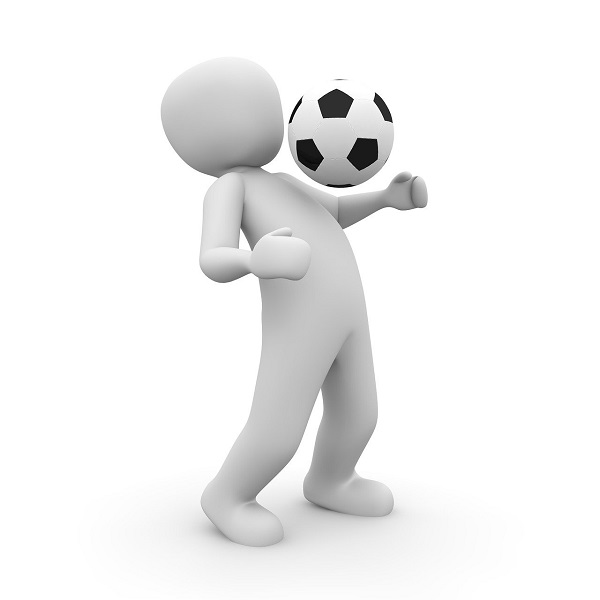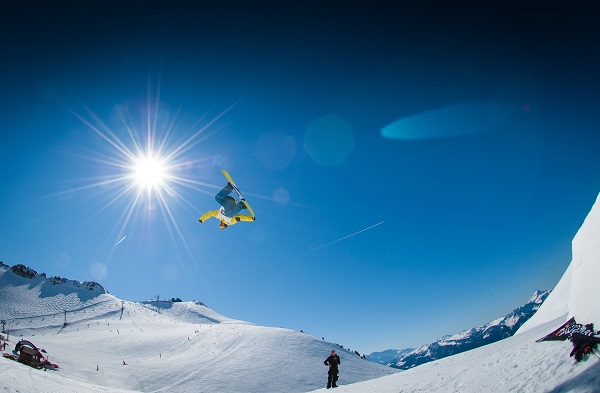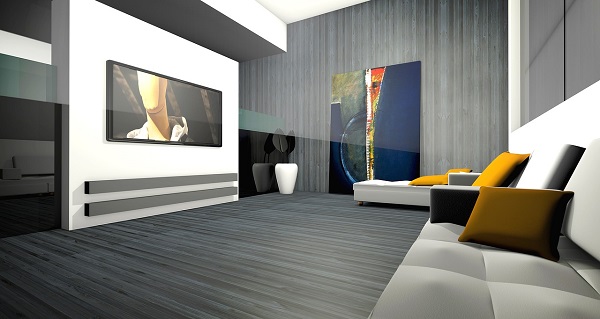4 Steps to Using Visualization for Mental Rehearsal in Sports
We all use visualization knowingly or unknowingly in our daily lives, and it significantly affects our attitude toward life. In sports, mental rehearsal is an important technique that athletes should leverage to give their best performance on the field. Just as physical training is necessary, our minds also require training through visualization exercises.
I’d like to draw your attention to the fact that as a sportsman, you are already using your imagination to plan your strategy before every game. Additionally, after the game, when you replay the moments in your mind to analyze and examine your performance, you are once again using your imagination. So, the mental rehearsal we will discuss in this post is not something entirely new to you. It’s possible that you might not have been fully aware of it earlier, and gaining a better understanding of it will help you intentionally use it to your advantage.

While completing the three-screen method in the Silva Ultramind course, I was particularly intrigued by instructor Vishen Lakhiani’s mention of certain experiments. In that session, he illustrated various research studies where people achieved improvements in real-time games through daily mental practice using visualization.
Like what many people believe, visualization is not only something that can hugely impact a person’s psychology but it can actually improve a person’s physical skills and movements while playing a sport. Apart from the increase in confidence and the change in attitude which can obviously enhance the skills of an athlete, practicing your craft with visualization can actually build muscle memory.
Muscle memory is a neurological phenomenon that results from the repetition of a particular maneuver. It allows an athlete to perform an action with the least conscious effort and it strengthens their reflexes.
Moreover, our involuntary actions and reflexes also highly depend on our subconscious mind programming which can be altered with the help of visualization, and of course, our self-confidence greatly improves when we use our imagination to create mental pictures of positive scenarios.
Now that we have discussed why mental rehearsal can prove to be a very effective tool for sportsmen and how it can help them hone their skills, let me show you how to use visualization to practice the sport of your choice.
#1 Goal Setting
Before you practice visualization, you need to be very clear about the outcome and that’s why goal setting is essential. Your goal could be something general like performing exceptionally well in your next match or it could be a specific one such as improving a particular skill but you need to be certain about what you want because it will give direction to your visualization session.
Our mind needs a target in order to stay focused, the more the goal is tangible and vivid, the better your ability to imagine will be. The reason behind this is that a specific purpose acts like a roadmap for the mind which will otherwise wander in random directions. If you state to yourself an objective before you sit to visualize then your thoughts will be aligned and your mind will work in your favor.
Let’s say for example that you are using mental rehearsal for sprinting. If you have not set a particular goal then maybe you will visualize reaching the finishing line but after a few minutes, you won’t know what to do and your mind will start to roam here and there without a destination.
However, if you have a crystal clear picture beforehand like you want to win a particular competition then you can associate that scenario with realistic elements like people who came to support you, the stadium, the race track, the weather, etc. to make your visualization session real or you can set your goal to improve something specific like your flexibility which will then allow you to imagine the scenarios where you are running with increased flexibility.
This is why goal setting is important before you start to visualize. Just like you plan your strategy before a real game, you need a plan for mentally rehearsing your sport as well. So the first step is to write your goal by keeping the end result in mind, and also jolt down a few elements that will make it possible for you to imagine a scenario more vividly like place, people, environment, etc.
#2 Relaxation
The second step is to clear your mind from the other thoughts so that you can enter into your imagined scenario with no hindrance and for this, you need to use a simple relaxation method to instantly calm down your mind.
To do this, find a quiet place and close your eyes while taking long deep breaths and mentally repeating “I am relaxed”. Do this for a while continuing with long inhalation and exhalation. After some time state to yourself that you will be completely relaxed at the count of one and start a gradual reverse countdown, with each count mentally say “I am going to a deeper relaxed state” and at the final count affirm “I am in a deep relaxed state now”.
The above-mentioned method is a brief self-hypnosis script that will help you to quiet your mind so that you can think and visualize what you have intended in the first step. You can also use any meditation or relaxation audio for this purpose, even mindfulness exercises can be quite helpful for this step.
#3 Creative Visualization
This is what we have been preparing ourselves for in the above two steps, once you know your goal and you are relaxed, you can begin to imagine a scenario where you have mastered the skill that needs improvement or have given an exceptional performance.
The key point here is, don’t go into the details of how you have achieved a particular goal instead focus on the end results. For example, if you want to win a race then imagine a scenario where you are celebrating your victory, being admired by others for your skills, or receiving the winner’s prize rather than trying to visualize how you defeated others or what you did to win. Similarly for rehearsing a particular skill, visualize that you already have honed that skill and let your imagination be what would be the case when you have mastered that skill, see yourself executing those techniques perfectly that right now are requiring improvement.
Your creative visualization session should encompass all sensory information. Try to vividly imagine the images, sounds, feelings, and every aspect of your desired scenario. The most critical factor in visualization is that it should feel real to you. You should be able to immerse yourself in that mental movie as if it were actually happening.
Alright, now you know what to imagine and how your creative visualization for practicing your skills should be, so let’s talk about how to visualize what you want. I have written a lot of posts on this subject and I request you to explore the site by searching visualization on this blog, you will find a plethora of posts related to using your imagination here.
For now, I’ll provide a simple and concise explanation to give you a basic idea of what you need to do. Visualization is a straightforward method, as I mentioned before, and we often use it unknowingly. We employ our imagination when thinking about past or future events, visualize other people’s lives when they share their stories with us, and create mental images when reading fiction. Whenever we become deeply engaged in our thoughts about something, we are using mental imagery. To leverage your creative visualization ability, all you need to do is use these images intentionally.

Imagining from the first-person perspective has been known to be more effective than imagining from a third-person perspective but it also depends on your convenience. The First-person perspective is more powerful because it feels more natural, you are doing what you want to do in those visualization sessions whereas in the third-person perspective, you are seeing yourself as doing something you wish to do. If you prefer the first way of visualization then you can simply imagine what you would do while remembering a past event, be in your body in your imagined event while seeing and feeling what it would be like to achieve your desires. However, you can also watch it like a movie where you see yourself succeeding as a spectator if you are more comfortable that way. The mental screen method in the Silva Ultra Mind program teaches a third-person perspective technique for visualization which is very powerful. Ultimately, your emotions will tell you what is best for you, choose whatever type of visualization generates strong positive feelings in you or is convenient for you.
# 4 Use Positive Affirmations
Even if your visualization sessions fail to generate the essential empowering emotions in you then affirmations will do, so you can prefer to use positive affirmations after your creative visualization to amplify your emotions or you can use them while imagining your desired event as a catalyst to the process.
For example, if you are using mental rehearsal to enhance your footwork as a boxer, you can imagine yourself swiftly moving and executing footwork like your role models. While doing this, you might say something like, “I am very skilled at boxing, and my footwork is unbeatable.” Alternatively, you can envision a scenario where you’ve won a match by defeating your opponent with incredible footwork and then say that affirmation. It all depends on your personal preference; some people find it easy to visualize while saying affirmations, while others may find it a bit uncomfortable
Use affirmations the way you want but you must choose your affirmations carefully, you can read my post on formulating your own affirmations for this purpose because there are certain factors to keep in mind while using affirmations, there ain’t no problem in using general affirmations like “I am a winner” though, you can use them without worries.
These are the 4 steps that will enable you to train your mind for your performance in any sport of your choice. After every rehearsal make a quick note of the elements that you missed and add them to your imagined event the next time. Keep on analyzing your visualization sessions in order to work on improving them. The more you try to find ways by reviewing your sessions the better ideas will come to your mind that will help you improve your mental rehearsal for the next time.
You can really hone your skills by combining this method with your physical practice of the sport, form a connection between your imagined reality and physical reality by trying to practice what you have mentally rehearsed in the real world, and vice-a-versa during your creative visualization session see yourself doing something which you are unable to do currently during your daily practice.
The most important factor here is consistency and involvement, you need to understand that training your mind is as important as training your body so you have to be persistent with both your mental rehearsal and physical training for a considerable amount of time to see some tangible results. With the right approach, determination, and proper knowledge about how you can prepare yourself both mentally as well as physically, your success is inevitable.
I hope you enjoyed this post, and I would love to hear your thoughts. Please share your comments in the box below. Your feedback is not only motivating but also invaluable for enhancing the content of my blog. If there’s anything important that I may have missed, kindly mention it in the comment section.
You can send your emails using the contact page, I will be more than happy to help you with any of your issues.
If this post was helpful to you then please spread the word by sharing it on your online social networks.
